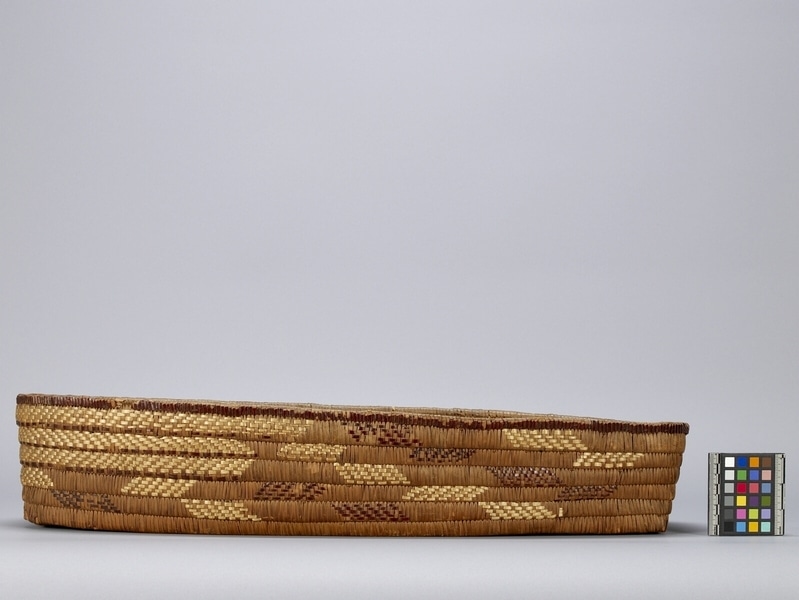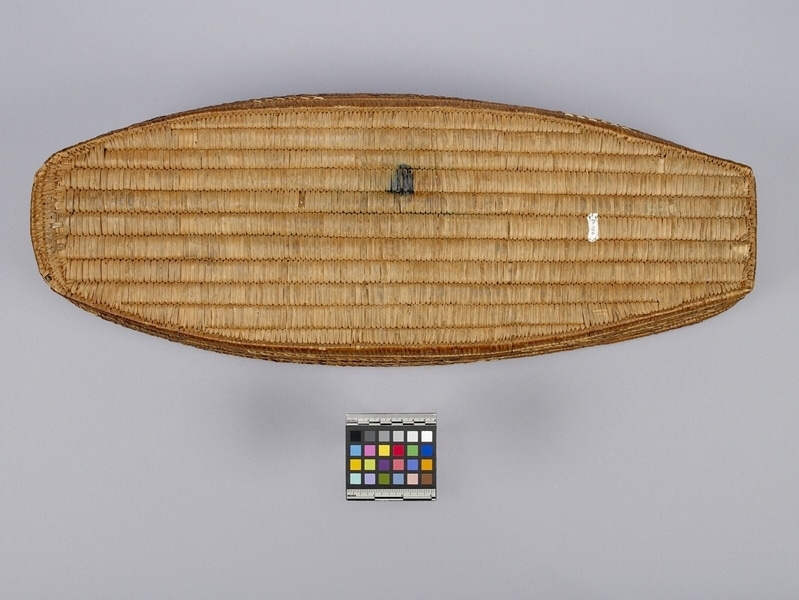Baby Carrier Item Number: D1.456 from the MOA: University of British Columbia



Description
Basketry baby carrier, or cradle, made of coiled work (bifurcated stitches) with parallel slat base construction. Decorated with partial beading. At the head portion, the top half is fully beaded in cat-tail while the lower half has staggered shapes in red cherry bark and cat-tail. Towards the foot end, these shapes form a stepped pattern. Rim is imbricated in red cherry bark.
History Of Use
For transporting infants, and for sleeping. Basketry cradles are thought to be of relatively recent origin by some basketry experts, such as Andrea Laforet of the Canadian Museum of Civilization. They may first have appeared in the late 1800s or early 1900s. In the early to mid 20th Century basket makers began expanding their reportoire of shapes and styles for collectors, and many new forms were seen including tea cups, tables, suitcases, and hand bags to name a few.
Cultural Context
basketry; children
Item History
- Made in British Columbia, Canada before 1934
- Collected in Fraser River, British Columbia, Canada between 1893 and 1934
- Owned by George H. Raley before November 1948
- Received from H. R. MacMillan (Funding source) and George H. Raley (Seller) during November 1948
What
- Name
- Baby Carrier
- Identification Number
- D1.456
- Type of Item
- carrier
- Material
- cedar root, cat-tail grass ? and cherry bark
- Manufacturing Technique
- coiled and imbricated
- Overall
- height 13.9 cm, width 27.4 cm, depth 70.2 cm
Who
- Culture
- Coast Salish: Sto:lo
- Previous Owner
- George H. Raley
- Received from
- H. R. MacMillan (Funding source) and George H. Raley (Seller)
Where
- Holding Institution
- MOA: University of British Columbia
- Made in
- British Columbia, Canada
- Collected in
- Fraser River, British Columbia, Canada
When
- Creation Date
- before 1934
- Collection Date
- between 1893 and 1934
- Ownership Date
- before November 1948
- Acquisition Date
- during November 1948
Other
- Item Classes
- basketry
- Condition
- good
- Accession Number
- 1960/0689